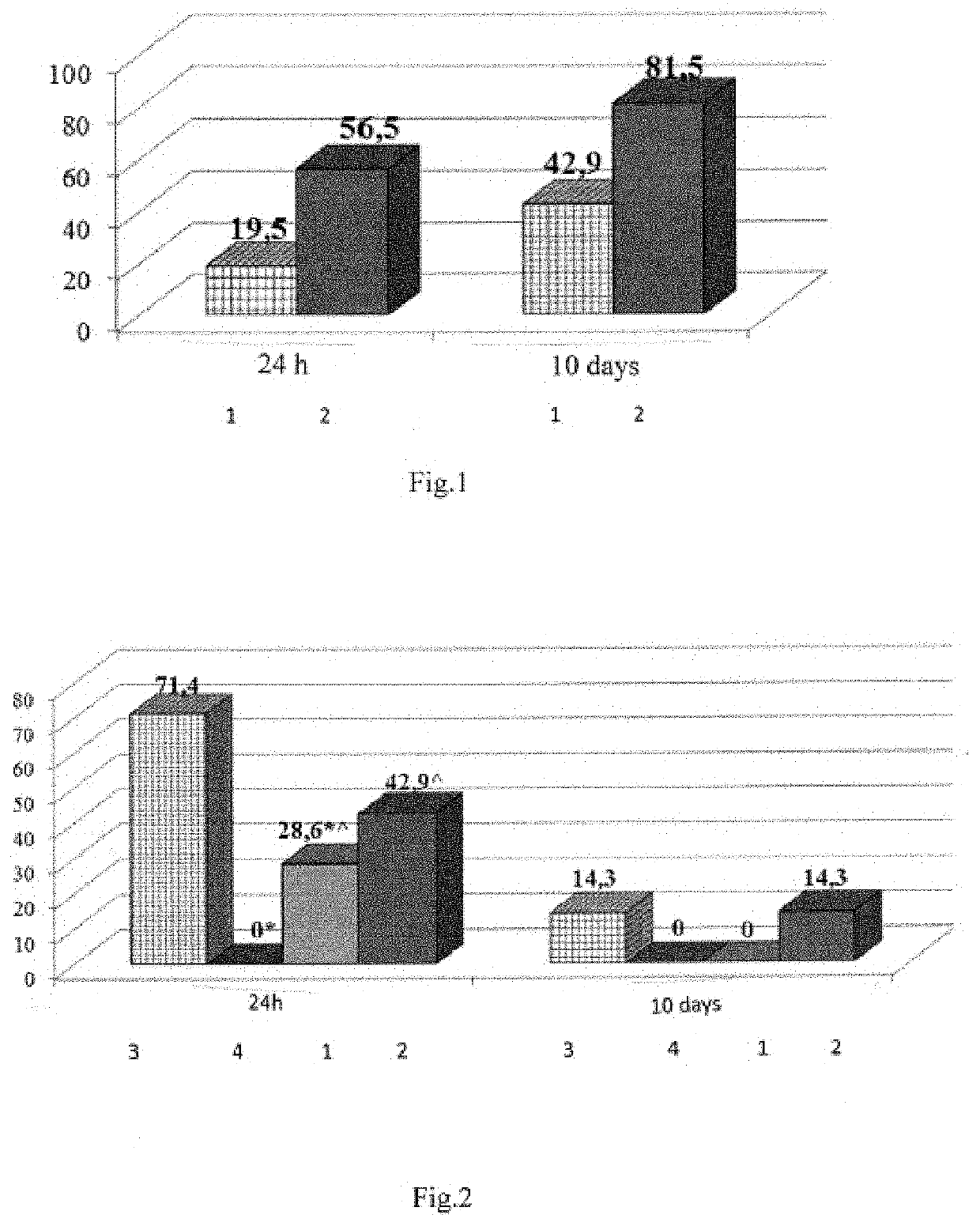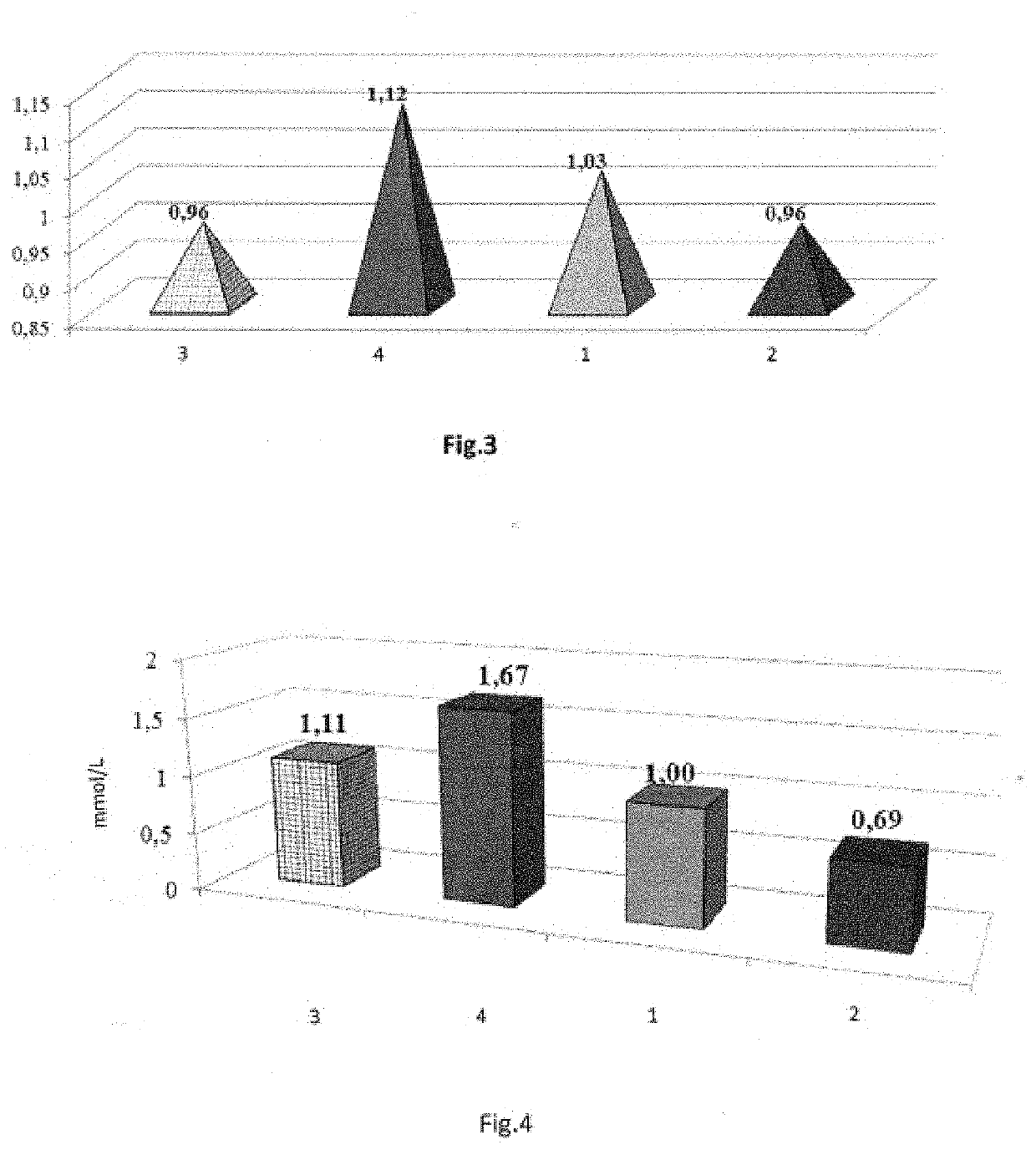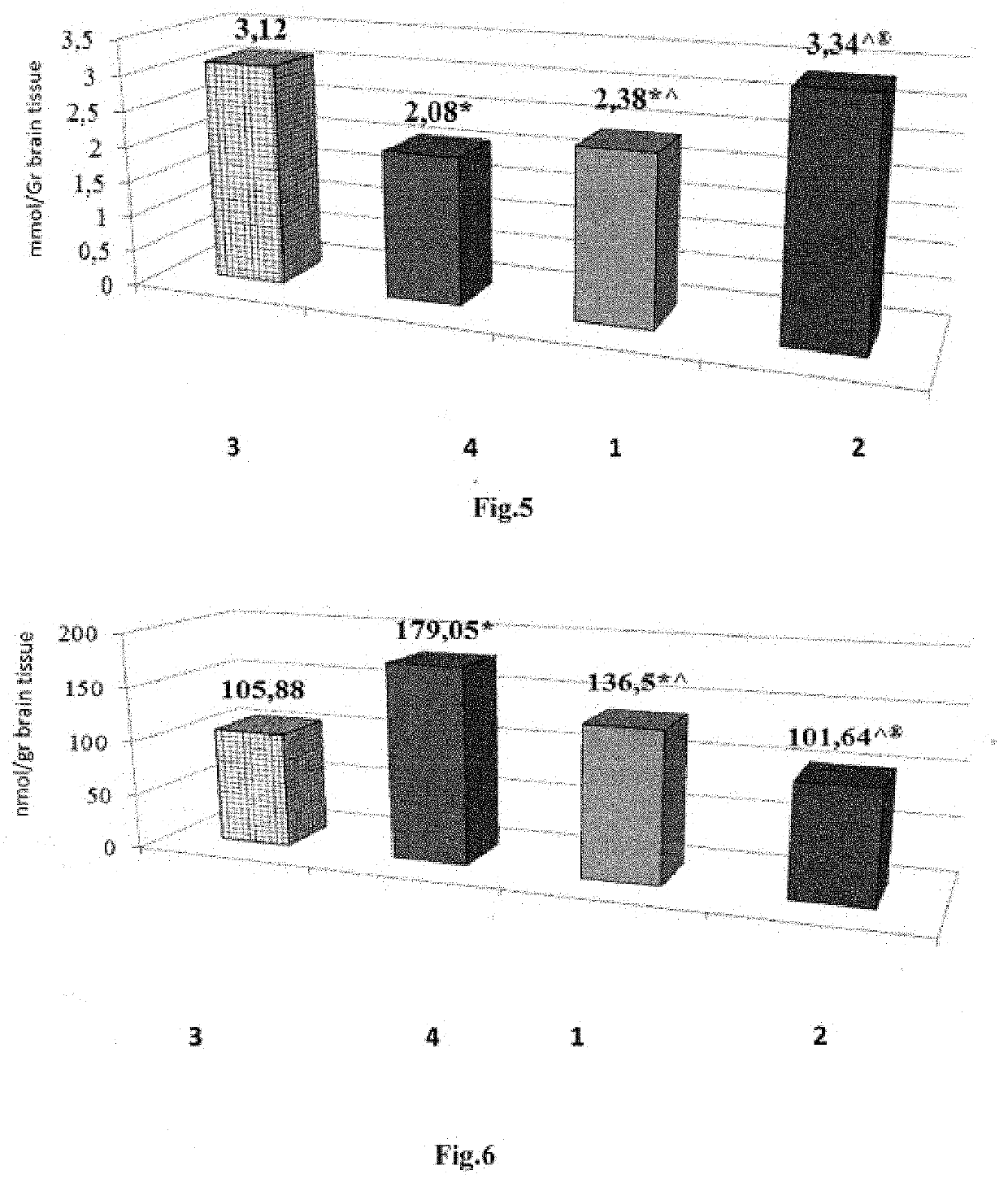Peptide with antidepressant activity and therapeutic effect against peptide with antidepressant activity and therapeutic effect against alzheimer's disease
- Summary
- Abstract
- Description
- Claims
- Application Information
AI Technical Summary
Benefits of technology
Problems solved by technology
Method used
Image
Examples
example 3
Antidepressant Properties of (LYS) on Reserpine-Induced Depression Models
[0072]The experiment was conducted on 16 white random-bred adult male rats weighing
[0073]180-220 g. The antidepressant activity of tetrapeptide (LYS), a neuroprotector, at a 0.02 mg / kg dose intranasally (i.n.) was evaluated. Imipramine, a classic tricyclic antidepressant, was used as the comparator drug at a 15 mg / kg dose (melipramin, EGIS, Hungary) intraperitoneally (i.p.). The experiment was conducted in two stages. At the first stage, the intact animals were divided into two groups; 1—control group (n=5), 2—“imipramine” group (15 mg / kg i.p., n=6), 3—“tetrapeptide (LYS)” group (0.02 mg / kg i.n., n=5). 25-30 min. prior to the start of the experiment, the animals were administered their respective drugs. The animals in the control group were administered 0.9% NaCl solution i.p. and i.n. in the volume equal to the volume of the medications. After that, the animals of all groups were placed in the open field (OF) ...
PUM
| Property | Measurement | Unit |
|---|---|---|
| Temperature | aaaaa | aaaaa |
| Volume | aaaaa | aaaaa |
| Volume | aaaaa | aaaaa |
Abstract
Description
Claims
Application Information
 Login to View More
Login to View More - R&D
- Intellectual Property
- Life Sciences
- Materials
- Tech Scout
- Unparalleled Data Quality
- Higher Quality Content
- 60% Fewer Hallucinations
Browse by: Latest US Patents, China's latest patents, Technical Efficacy Thesaurus, Application Domain, Technology Topic, Popular Technical Reports.
© 2025 PatSnap. All rights reserved.Legal|Privacy policy|Modern Slavery Act Transparency Statement|Sitemap|About US| Contact US: help@patsnap.com



